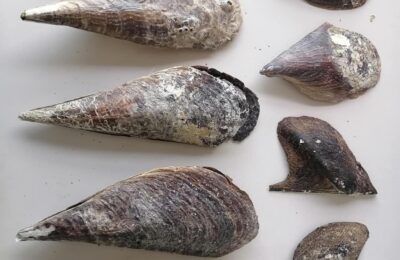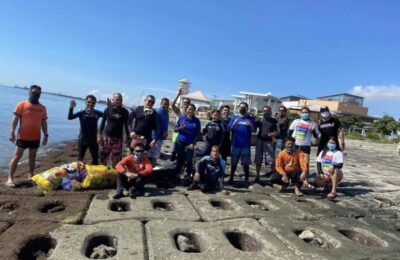The publication of an October 16, 2024 news report saying marine biologists from the Cebu Technological…
SeaKnights recover Ghostnets in ICC ’20
Three loads of killer ghostnets were among the haul recovered in the Lapu-Lapu City leg of the International Coastal Cleanup last Saturday, Sept. 19, 2020.
Ghostnets is the general term used to describe fishing nets of nylon and lead weights that have been abandoned by fishermen after getting entangled by corals.
“Yesterday, the ocean breathed a little bit easier,” said Rev. Fr. Michael Murphy Sarsonas in a social media post the day after.
Sarsonas, who took part in the cleanup, chairs the Cebu Archdiocesan Commission on Environmental Concern, is a CMAS dive master and a SeaKnight.
The priest’s post hints at the effect ghostnets have on the marine environment. Because of its construction, it is a source of microplastics, which impacts the food chain. Moreover, it is also a killer of entire patches of reefs; and of humans.
Nets get abandoned when one part gets entangled in coral structures. As fishermen cut them loose to save what they can, the discarded portion drops to the sea floor and drifts with the current until it also gets entangled into coral.
Reef killer
Because of the shape and design of nets, it spreads out and engulfs whole swathes of corals, preventing reef fishes from getting in or getting out and disturbing the ecosystem. Eventually, the entire reef system declines.
They also pose a significant threat to freedivers and scuba divers who might get entangled until their air supply or breath-hold runs out.
The three loads of ghostnets were all found in one barangay, Punta Engaño – literally “deception point” in the Spanish creole of Cebu – in relatively shallow but extremely turbulent waters.
Punta Engaño is in the northernmost tip of Mactan Island, where the waters from the Mactan Channel and Magellan Bay in the west meet and the Hilutungan Channel in the east converge.
The barangay is home to the Mactan Shrine and many upscale resorts and hotels, and is part of the touristy Lapu-Lapu City, one of the two local government units in Mactan Island; the other being the Municipality of Cordova, where fishing remains the main source of income for many.
It is in conditions like this – the meeting of three elements of people, ghostnets, and shallow but turbulent waters – where the danger of ghostnets really emerges.
Spin and tumble
Even veteran SeaKnights, like co-founder Alfie Fernandez, cannot overemphasize the potential for harm.
Fernandez led Saturday’s six-person SeaKnights volunteer crew that was composed of himself, Sarsonas, two other dive masters, and two rescue divers.
The team, whose dive was under the auspices of the Commission on Environmental Concern of the Archdiocese, only knew they’d be going to Punta Engaño minutes before departing; when they got assigned to the boat of local dive resort owner Jaime Ballori Lapac.
“The sea spins you one way and then pushes you another,” Fernandez said of the dive that only spanned twelve meters and lasted less than thirty minutes, but had everyone surface with tanks almost already half empty.
The first load of ghostnets were spotted and recovered less than 10 minutes into the dive. As encountering ghostnets was not expected, none in the team brought lifting bags.
Against the current
Portions of the net had to be carefully freed from corals they were entangled in, with divers approaching in the direction of the current and hovering steady to avoid getting entangled by the net once it gets loose.
Divers then had to secure the nets in sections and safely ascend to where they would be picked up by the dive boat.
It was during the first quarter of the ascent that the second load of ghostnets was found snaking in the seabed. Some of the divers detached from the first group to perform the recovery.
This recovery would prove quite taxing as divers now had to move against the current to get to the net, reapproach in the direction of the current to begin freeing the entangled portions.
The third load was found and recovered the same exact way.
“We did this kind of work regularly in Talisay before the pandemic, Fernandez said of ghostnet retrieval during the boat ride back to the Angasil Port, where the ghostnets would be weighed, documented, and disposed of by representatives of the Lapu-Lapu City Government and the event organizers.
The Church-inspired all-volunteer SeaKnights was founded in Talisay City, where it is still based, back in 2004.
Its mission is to engage in reef management and rehabilitation activities and advocate sustainable fishing thru the convergence of efforts by empowered stakeholder communities.
This Post Has One Comment
Comments are closed.







[…] Related Story: SeaKnights recover Ghostnets in ICC ’20 […]